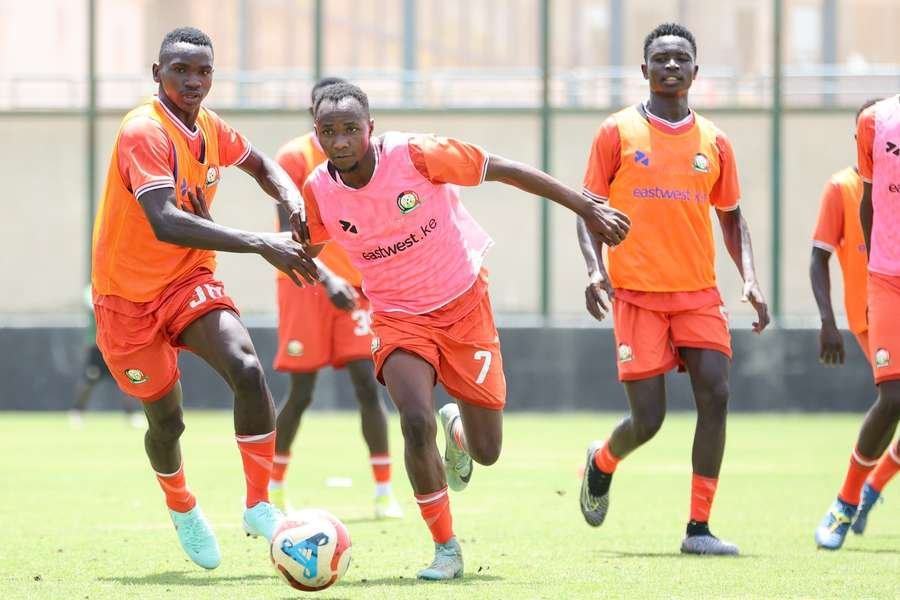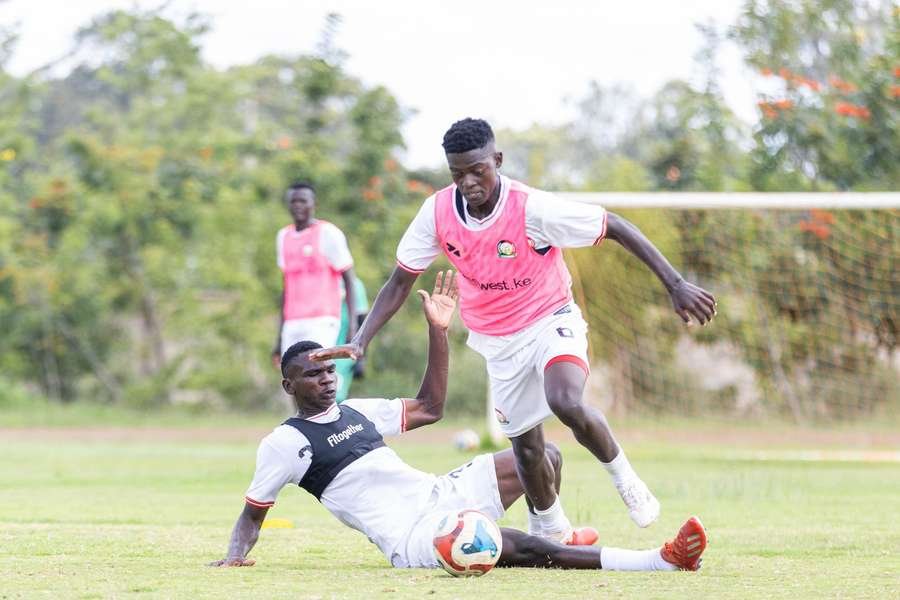The Kenyan U20 national team, known as the Rising Stars, is poised to create history by taking part in the TotalEnergies CAF Under-20 Africa Cup of Nations (AFCON) in Egypt.
Under the guidance of coach Salim Babu, this will be the team’s inaugural appearance in the tournament, scheduled to run from April 27 to May 18, 2025. This marks the 18th edition (or 25th if including the editions without hosts) of the competition, featuring 13 countries all vying for continental glory, with four spots available for the FIFA U-20 World Cup in Chile in 2025.
During the final draw held by the Confederation of African Football (CAF) following the withdrawal of Ivory Coast as the host nation, Kenya found themselves in Group B, competing against record seven-time champions Nigeria, past winners Tunisia, and Morocco.
Group A will see hosts Egypt, three-time champions, face off against Zambia, Sierra Leone, South Africa, and Tanzania. Defending champions Senegal will compete in Group C along with the Central African Republic, DR Congo, and Ghana, who are eager to reclaim the title they last held in 2009, the same year they became the first African nation to lift the FIFA U-20 World Cup.
When does the tournament kick off?
Kenya’s opening group match is set for Thursday, May 1, against Morocco, taking place at the 30 June Stadium in Cairo, with a kick-off scheduled for 21:00hrs EAT. The tournament itself will commence on Sunday, April 27, with two matches in Group A.
Zambia will start against Sierra Leone, who, like Kenya, will be making their debut at this level, followed by a clash between hosts Egypt and South Africa, both matches to be held at the Suez Canal Stadium.
The Rising Stars will face Tunisia in their second match on Saturday, May 4 (kick-off at 18:00hrs EAT), and wrap up the group stage against Nigeria on Wednesday, May 7 (kick-off also at 18:00hrs EAT). All of Kenya’s group matches will be contested at 30 June Stadium.

Which venues will host the tournament?
The host nation was officially determined at the CAF Executive Committee meeting and CAF Awards held in Marrakesh, Morocco on December 16, 2024, with Ivory Coast initially named as the host. However, on March 26, 2025, it was announced that Ivory Coast would withdraw, relinquishing their automatic qualification spot, and the new host was not disclosed immediately.
On March 27, 2025, Egypt was announced as the replacement host. Egypt had previously submitted a bid during the initial bidding phase. The opening fixture was then rescheduled to April 27.
The tournament will take place across four venues: the Cairo International Stadium, an Olympic-standard facility with a capacity of 75,000, located around 10 km from Cairo International Airport and the city centre. This stadium underwent renovations in 2005 in preparation for the 2006 AFCON.
The 30 June Stadium, with a capacity of 30,000, will host the Rising Stars’ group matches. This venue is a key site for the Egyptian Premier League and serves as the home ground for Pyramids F.C.
Ismailia’s Suez Canal Stadium will serve as another venue for the youth tournament. Rebuilt entirely from 2019 to 2022, it now has a capacity of 22,000. Additionally, the multi-purpose Suez Stadium, capable of accommodating 27,000 spectators, will host several matches. It was one of the venues for the 2019 AFCON.
Where can you watch the game on TV?
The Confederation of African Football (CAF) will stream all matches live, from the opening game through to the final. FIFA will also provide live coverage links. However, no local broadcasters have confirmed their intent to air the matches from Egypt.
How did the Rising Stars qualify?
Kenya secured their place in the continental tournament through a remarkable campaign at the 2024 CECAFA U20 Qualifiers, finishing as runners-up after a narrow defeat in the final against Tanzania. Their journey was marked by exceptional play, including a decisive 4-0 victory over Burundi in the semi-finals.
The Rising Stars remained unbeaten throughout the competition, achieving four wins and one draw, scoring 14 goals whilst conceding only one. Although they fell short against Tanzania in the final, their performances highlighted the rise of youth football in Kenya.
This qualification represents a significant milestone in the development of youth football in the country, allowing the Rising Stars a platform to showcase their talent against some of Africa’s best.
While they have yet to secure trophies at this level, the ongoing development of the team suggests they are poised to become a formidable presence in the tournament.
Key players for Kenya
Although regarded as underdogs, Kenya boasts several standout players who have previously impressed and may guide them through the competition.
Leading the charge is Amos Wanjala, who has proven to be an instrumental figure in their journey to the tournament, showcasing his skill with a tally of 14 goals scored and just one conceded.
Additionally, Manzur Okwaro and Ezekiel Omuri are crucial members of the squad. Okwaro’s defensive prowess and leadership make him one of Kenya’s most dependable players, while Omuri’s speed and technical prowess pose a consistent threat in attacking positions.
What has coach Salim Babu said?
Coach Babu has expressed confidence, stating that the team will pursue every avenue to advance beyond the group stages of the tournament.
“If we secure victories in our first two matches, we’ll reach the quarter-finals—that’s our primary goal, and we’re committed to that plan. We want to advance out of the group; nothing will hold us back from achieving this aim.”

Babu emphasised the challenges ahead: “This is not an easy group as some may suggest; we need to approach this with our best efforts, having a clear strategy for what we aim to achieve at the tournament.”
Captain Baron Ochieng reassured fans that the team holds no apprehension facing off against anyone during the tournament.
“We are not intimidated by Morocco or any of the so-called giants; we knew we might cross paths with them regardless of the draw. We’re prepared for whatever comes our way and have faith in our capabilities to adapt, no matter the conditions.”
Ochieng added: “As players, we understand that we’ll need to adjust and not use weather as an excuse if results don’t go our way. Many of us play in varied conditions, and we have confidence we will acclimatise.”
The tournament will consist of a three-group format: Group A features five teams while Groups B and C have four teams each. The top two teams from each group, along with the two best third-placed teams, will progress to the quarter-finals, concluding the tournament on May 18, 2025.

Compiled by SportArena.com.au.
Fanpage: SportArena.com.au.
LiveScore – Live Sports Results & Odds.




